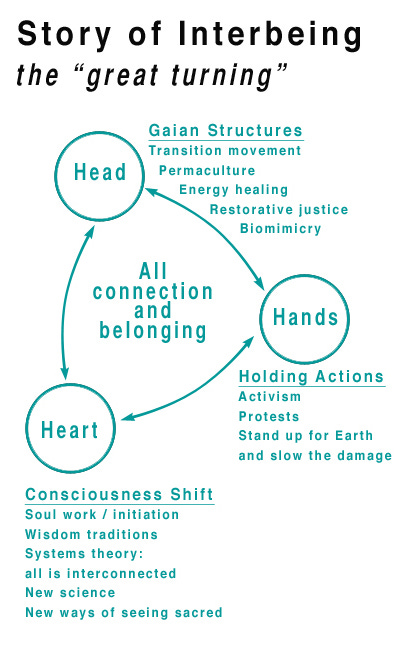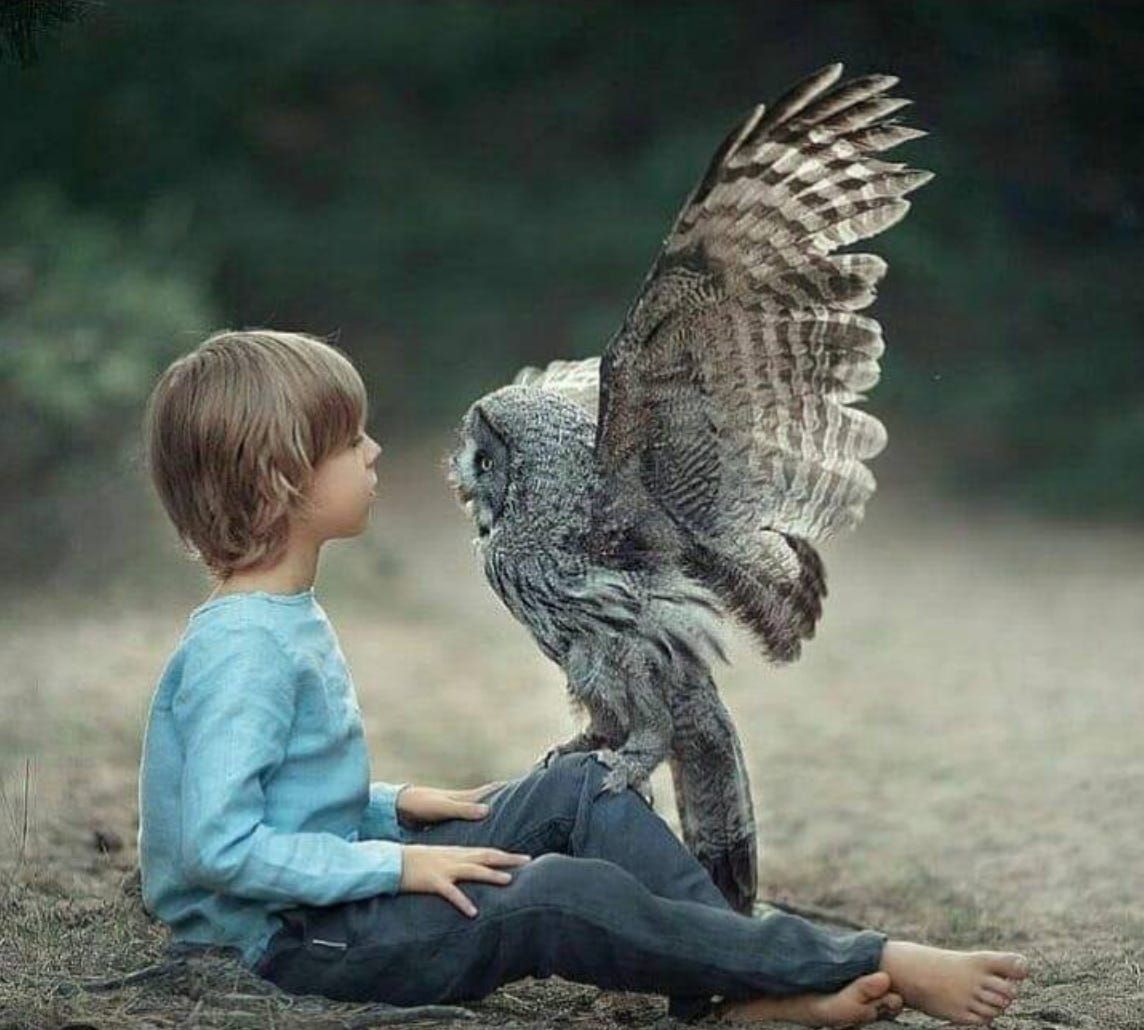What’s the best, most effective way to tell the story of needing a new story?
My response to Hari Berrow's 'Where the Eyes Goes, the Car Goes'
What’s the best, most effective way to message the environment?
asked this in her recent post, ‘Where the Eyes Goes, the Car Goes.’1 This question has dogged me for decades. I’ve tried showing scenes of wildfire devastation, oil-soaked waterfowl, and flooding. I’ve highlighted the upside of saving money by saving energy. I’ve issued warnings and pointed fingers of blame. I’ve spewed facts and data to naysayers. I’ve tried it all, but it’s hard to tell if anyone’s listening Everything keeps getting worse.Inspired to weigh in on this critical question, I thought to make a timeline of influencers2 starting in 1856 with Eunice Newton Foote’s discovery that CO2 is a greenhouse gas, and all the way up to Greta Thunberg. I’ve read, met, and studied with dozens of folks who belong on such a timeline. They’re all brilliant—scientists, educators, activists, architects, theologians, public intellectuals, journalists, management consultants, indigenous teachers and writers. Some, like Bill McKibben, are here on Substack, which makes me very happy. I thought maybe a timeline would reveal some hidden pattern that I’ve so far missed, a pattern that would answer Hari’s question once and for all.
But a timeline sounded boring, even to me. Being preachy and pedantic is the very problem that Hari identified in her post. I couldn’t have my response end up proving her point. How embarrassing.
So, what IS the best, most effective message? This feels even more urgent now that the conversation about climate has slid from haughty denial to helpless despair faster than you can say, apocalypse. Countering that nonsense feels like a distraction from the all-important real message (whatever that may be).
The doomers’ latest mantra, It’s too late, comes from the same place as the deniers’ It’s a hoax. Nature isn’t acting like we want her to; she’s not letting us control her without consequence, how dare she? Come on, humans! We don’t have to be so petulant and cynical. We’ve built cities like Paris, for pity’s sake! Landed men on the moon! Designed the iPhone! Put wheels on our luggage! As Hari says, We can do hard things.
But can we also make them fun? After wandering in the dry deserts of dire warnings and finger-pointing, I finally admitted that I prefer to focus on the upside. Maybe even have a laugh once in a while. That’s what I love cartoonist Joel Pett. He gets it.
Here’s a nice synchronicity. While I was working on this piece, the architecture school held a first-ever media training session for faculty and staff. And it was fun!
Crafting your key message
We considered the classic communications questions: What is the problem? Why do I care and why should you care? How can I/we turn this around? Who benefits? And the all-important, Know your audience. Did you that more than 50% of Americans aged 16 - 74 read below a 6th grade level? So, keep it simple. No jargon.
We practiced crafting our “key message,” which the trainer compared to a good song refrain. If you’ve ever watched a skilled politician speak, they do this all the time. No matter what the question is, they’ll politely shift to their key message, using a phrase like What I will say is— or The important thing to remember is—. Pete Buttigieg is a master at this, and he always does it with an impish smile.
This is the formula we used:
Sentence 1: Here’s what we know about the problem
Sentence 2: What my research / work is doing to solve it
Sentence 3: Here’s why it matters / why you should care
They reminded us to avoid jargon words, so I challenged myself to avoid the words, “resilience” and “resilient.” In the spirit of transparency, here’s what I came up with:
When we work together to address environmental problems, we can create more livable and lovable communities. Too much environmental messaging is focused on negative news, dire consequences, and pointing fingers of blame—which hampers creativity and shuts down possibility. Seeing built examples of climate-sensitive, efficient, beautiful places can inspire hope and ignite further action.
This was kindly critiqued by my colleague, a super-smart Community Planning professor, as too theoretical and abstract. She suggested offering concrete examples that people can relate to. It was both humbling and true. You’d think after years of trying, I’d be able to get this right. 🤷🏼♀️
One example I thought of is D.C.’s 11th Street Bridge Project3, which connects the city across the Anacostia River to a historically Black neighborhood that’s been redlined, racially zoned, and ignored for decades. Now, it’s under threat of gentrification as developers discover what a cool place it is. The linear park is beautiful and, more importantly, the community was engaged in the design process.
Another great example is Reimagine Middle Branch in Baltimore, a tour-de-force of public-private collaboration, where smart people figured out how to access massive Federal climate resilience4 funding to improve thousands of lives.5
You try it! I’d love to see your key messages, if you’re game to share them in the comments.
The trap of selling the upside
For years, my upside message focused on what could be measured and managed. Sure, businesses can save money by saving energy; students learn and test better in classrooms with natural daylight; and employee productivity soars when indoor air quality improves. It’s a trap to assume we can measure and manage our way to right relationship with the living earth. That’s just not how it works.
“The significant problems we have cannot be solved at the same level of thinking with which we created them.” ~ Albert Einstein
Capitalism has been studied and critiqued by far wiser folks than me.6 It’s safe to say, a system that relies on treating the entire living world as either a material depot or a waste dump, a system with the raison d’être to maximize profit by exploiting workers, will never get us there.
“Our victories were pyrrhic because we failed to address the values, assumptions and beliefs that underlie our destructive demands and activities. The way we see the world shapes the way we treat it. If we regard a mountain as a deity rather than a pile of ore, a forest as a sacred grove rather than lumber and pulp, other species as our biological kin rather than resources, the planet as our mother and life-giver and not an opportunity, then our actions will reflect far greater humility, respect and responsibility.” ~ David Suzuki, The Sacred Balance
The capitalist mantra of saving money by doing good bypasses other more compelling reasons to do good. One of which is—it feels good to be on the side of life, reflecting humility and respect. Such inspiring positivity permeates the podcast I made to highlight some of our graduate students’ most environmentally visionary projects. Before there was the Building Hope Substack, there was this podcast.
Embrace joy and find your niche
It warms my heart to find communicators who emphasize joy in climate action. Climate scientist
, author of Saving Us: A Climate Scientist’s Case for Hope and Healing in a Divided World, excels at helping people of all walks of life find common ground around shared values. Marine biologist ’s new book, What If We Get It Right? builds on the beautiful realism of 2020’s All We Can Save: Truth, Courage, and Solutions for the Climate Crisis—an inspiring book of essays, poetry, and art, all by women. Johnson’s recent book launch was a party with entertaining performers, a DJ, and a comedian emcee.
What if you’re not optimistic by nature? Or maybe you read one of
and ’s deeply researched exposés of the fossil-fuel industry’s outrageous corruption—and now you want to break something?7 Good news. Anti-nuke activist, brilliant teacher, translator of Rilke’s poetry, practicing Buddhist, and wise elder, Joanna Macy, has something for you. As Macy teaches in her book, The Work that Reconnects, there are three types of action, each suited to different values, personalities, and motivations. Pick one. Start anywhere. It’s all interconnected, it all counts, it’s all needed. We’re all needed.8A new story
I’ve have written before9 that we need a wholesale reconsideration of our cultural story—big questions about who we are and why we’re here. I’m not alone in this—hence my initial impulse to make a timeline of these messengers. Here’s the gist: The story that we moderns live by is not only mistaken and impoverished; it’s dangerous and destructive. It’s not only killing the planet; it’s killing us.
By contrast, the timeless, perennial understanding that has served countless human civilizations for millennia before the modern era (and, in some places, even today) is that we are all part of the web of life. We are not an exception, not at the top of a pyramid org chart of life, not in charge of everything.
My key message is exactly this. When we step out of the lonely, self-imposed center and rejoin the wider community of life, we see and experience the world with wonder and appreciation. We feel as sense of welcome and belonging. We’re more grounded, more connected, more joyful.
Since it’s all too easy to be swept up in the fast pace of modern life, caught up in doomscrolling the latest bad news, or binging British crime dramas, I rely on the great nature writers here to remind and mentor me in the many, many ways I can step outside and back into life.
, , , , and are but a few.10What’s the best, most effective way to tell the story of needing a new story? This is the vision that beckons and inspires me. It’s a brilliant, worthy challenge. Despite what the dire news outlets choose to emphasize in their insatiability for clicks, I can always find intelligent, caring, compassionate people right here telling stories of wonder and awe, living their genuine admiration and connection through their work.
If you enjoyed this post, a lovely ❤️ keeps me going. Another way to show love is to share this post with others by restacking it on Notes, via the Substack app. Thanks!
In further service to Substack’s readers and nature writers, Rebecca Wisent curates this lovely directory of nature-focused writers:
Post is here. Subtitle, ‘stop being so f**king boring’ 😂
Not the TikTok and Instagram kind; the expert kind.
Ha! There’s “resilience"! Jargon is a tough habit to break.
Season 7 of the excellent documentary podcast, Scene on Radio, focuses entirely on Capitalism. It’s well worth a listen.
“Big Oil knew monster storms were coming. We have the receipts.” is their latest.
Macy’s interview on the podcast On Being is a must-listen. I mean, it’s called “A Wild Love for the World”—need I say more?
The monthly journal, NatureStack curates a selection of the best writing and artwork here. Issue #4 is here.












I don't know if there is a "most effective" way. I think different people will respond to different things. You will be slowed by skepticism, naysayers, and politics no matter what way you choose. Societal attitudes change at a glacier pace so it is often difficult to see the impact even if it's happening.
Thanks for devoting your time and intellect to this worthy topic, Julie. Yeah, when notions (or myths) of “sustainable development” or “ecosystem services” don’t work (and I believe they don’t), we’ve always got joy and wonder in nature. They’re still intrinsic to what it means to be human, and perhaps they’re the message.